Compact GLA 250 packs Mercedes punch
Filed under: Weekly test drives, Autos
By John Gilbert
The classic stature of Mercedes Benz automobiles runs all the way back to the company’s origin, in the late 1800s. You could say it runs back to when Daimler and Benz first met, except one of the wonderful legends of the company is that the two built competing vehicles and they never did meet, despite dwelling only a few miles apart. The incorporating of the two came after both pioneers had died, and it’s safe to say that while both had visions of what a motorized carriage could be, undoubtedly neither could have envisioned the evolution of cars to today’s standards.
To say nothing of trucks.
While Mercedes cars retain the iconic nature of the ultimate luxury sedans, the always-expanding array of Mercedes SUVs is just as iconic, from the largest all-terrain and luxury family haulers to the most compact. As it turns out, after being completely impressed with all the SUVs, by personal favorite comes down to the GLA250 — a compact but fully capable vehicle that will do anything its owner might bid it to do.
While spending a week with a 2021 model GLA250 4Matic SUV, we put it through its family-hauler paces on the hills of Duluth, Minnesota, as well as a pleasant trip up Lake Superior’s North Shore on the legendary Hwy. 61 up to Grand Marais, a pleasant destination that gets close to the Canadian Border but provides an artsy stop with shops, restaurants, and that One Particular Harbor protecting the sailboat landings from the sometimes temperamental Lake Superior. That is the perfect setting for a destination drive as well as some hiking trails both in and near town. Read more
LC500 dazzles from looks, power, to top
Filed under: Weekly test drives, Autos
By John Gilbert
If you were buying a car and could only pick one, would you prefer a high-performance sports car with exceptional power and handling, or a stunning, great-looking sports car that freezes passersby in their tracks every time you drive past?
The answer, of course, is both. And both are readily attainable — for a price. The provider of this spectacular vehicle that combines such mind-blowing attributes is Toyota. Surprised?
Known almost exclusively for steady, durable and intelligent engines and vehicles, Toyota has made inroads into the higher-performance segments in the last couple of years, mostly through its upscale Lexus nameplate. They’ve struck paydirt, with the 2021 Lexus LC500.
That badge has been the ultimate, for Lexus, and the plateau of excellence has been raised on several counts with the 2021 L:C500.
First, beautiful as a coupe, for this year, it’s a convertible. The LC500 is great looking with the top up, as a coupe, but it goes from attractive to spectacular with the holding of a concealed console switch that executes a mechanical coordination of erector-set inner parts, which raise the rear deck, lift off the sleek roof, and nestle it down into the rear compartment before uncoiling the mechanical routine and latching the decklid over the whole thing. It takes about 12 seconds for the process, which means you can easily put the top down at a stoplight. More importantly, if you’ve been driving top-down and avoiding the threat of rain sprinkles, you can put the top back up at the next stoplight in the same brief mechanical flurry to keep you dry.
The test LC500 came in “Infrared,” a sizzling metallic red that reflects every meaningful bit of light back at your receptive eyes. Somehow, convertibles look better in red, and red looks better in Infrared. Read more
Turbo-3 lifts Bronco Sport above 30 mpg
Filed under: Weekly test drives, Autos
By John Gilbert
The new Ford Bronco Sport — the smaller of the two Broncos being introduced for 2021 — may be the big seller for Ford because of its sophistication as a utility vehicle for everyone, not just heavy-duty off-road types. There are various models within the Bronco Sport group, and having reported on a couple of them, it’s time to also delve into the Outer Banks.
Or maybe you dive into the Outer Banks, if you’re taking a late-summer vacation. We took it everywhere, to play tennis, and to go hiking, where my wife, Joan, enjoyed exploring new trails.
The inner features of the Outer Banks model are set up for folks or small families that have an adventurous side and may want a vehicle that will do anything and everything as a small-family hauler, but also can take the water-toys along and make sure the leftover sand can be easily washed out, or the family hound can be transported home messy knowing you can clean up with a rinse.
I found the Outer Banks had its biggest surprise under the hood, where the Rapid Red Bronco Sport carried Ford’s smallest mainstream engine — a 1.5-liter, 3-cylinder, turbocharged up to EcoBoost standards, which means 181 horsepower.
When you go for a test-drive, do not bypass this one just because it’s a 3-cylinder, which seems weird to the sensibilities of American buyers used to V8s, V6es, or 4s.
In building engines, a lot of 4-cylinders run smooth, but a lot of them don’t, too, because they have a harmonic vibration that frequently needs to be settled down with anti-vibration techniques, up to and including counter-balance shafts. Remember companies such as Volvo and Audi used to have 5-cylinder engines that had the same effect on buyers, but having 3 or 5 cylinders means inherently vibration-free operation.
So when you take a drive in a Bronco Sport, try the Outer Banks and pretend that you’ve been told it is either a small V6 or a quite-potent 4-cylinder, and you’ll be extra impressed at the pep of that 1.5 EcoBoost. For those who understand all that, knowing it is a turbocharged-3 will be an attraction, rather than a detriment, and the way it sips fuel running around in traffic will impress you even more.
What will astound you, is when you stop to refill the fuel tank and calculate that on your last tankful you got 32.4 miles per gallon. That is not just an estimate, either. The test vehicle I drove for a week up and down the North Shore, revisiting Hwy. 61 along Lake Superior’s wildfire-smoke-infested air in this late summer of 2021, was driven in both highway travel and up and down the hills of Duluth, Minnesota.
Our combined driving included a run up the Shore to Castle Danger, where we again marvelled at the all-rock expanse of beach. After all our combined driving, our tankful calculated out to 32.4 miles per gallon.
Now, in an all-wheel-drive SUV, even if compact, that’s impressive, although I must admit we never bothered with the AWD in the heat of August, which has now proven to be the hottest in Duluth’s history.
For those unfamiliar with the Bronco Sport, it gets the old name on an all-new project, which is a sort of boxy vehicle plunked down on a smaller platform from the full-sized Bronco. No sense creating an all-new platform, though, because the popular Ford Escape compact SUV is right across the showroom and is one of Ford’s most popular vehicles. So Ford put the neat new body on the Escape platform.
With some surprise, I find the Bronco Sport, boxy or not, handles with quicker agility than the sleeker Escape, so the match works.
Comfortable bucket seats up front, and fold-down bench in the rear are covered with this special bullet-proof fabric that feels rugged and yet not uncomfortable, and again is aimed at efficient clean-up. You could, as mentioned, hose out the rubberized rear storage area, after you’ve folded the rear seats down, or by leaving them up.
The larger EcoBoost 4 develops 245 horsepower, which is more than enough for any service. I say more than enough because I am convinced the EcoBoost 3 with its 181 horses can breeze up Duluth’s steepest mile-long avenues with ease. Read more
F-150 adds hybrid to boost power, mpg
Filed under: Weekly test drives, Autos
By John Gilbert
As we’ve learned through the COVID-19 pandemic, we have not only survived, but gotten comfortable working from home instead of in the office. Ford Motor Company is trying to take us one step beyond that — working not in the office, not at home, but in a new F-150 pickup truck.
Not just any garden-variety F-150, of course, but an F-150 4X4 SuperCrew XLT. The name and designating letters don’t tip it off, but this pickup takes it one notch beyond that. It’s a hybrid.
Ford knows that its top competitors, particularly the Ram 1500, but also including Chevrolet’s Silverado, GMC Sierra, Toyota Tundra, and even the midsize Honda Ridgeline, have filled their interiors with all sorts of creative features and ideas to make it more livable, so Ford has tried to include all that, with a larger dashboard screen, the latest in SYNC technology, and a console large enough to house all sorts of work-targeted things, such as file folders and just about the files themselves.
Flipping the console lid creates a desk-like surface, and the Pro Power OnBoard system makes it a virtual office on wheels.
But while loading it up with features, Ford makes sure the SuperCrew XLT over-achieves when it comes to operating as a basic pickup truck, too!
For power, the 3.5-liter EcoBoost is renamed by Ford as “PowerBoost,” to designate not only a turbocharged power boost, but also the added energy from a 44-horsepower permanent magnetic synchronous electric motor. This concept is Ford’s own, dating back to when it competed with the first Toyota Prius and Honda hybrids. It mostly resembles Honda’s, fitted between the V6 and the 10-speed electrically operated transmission. There is also a 1.5 kilowatt-hour lithium ion battery under the floor of the rear seats.
Combining all that power gives you 430 horsepower and a whopping 570 foot-pounds of torque.
That adds up to a payload of 2,120 pounds, and a towing capacity of 18,700 pounds.
The other more useful and more obvious benefit of the hybrid modulating the turbo V6 power is that the test pickup — which came in stunning Velocity Blue that led numerous passers-by to casually say, “Beautiful color,” or “Nice color” whenever I climbed out of it — also is fantastic when it comes to fuel efficiency.
Having driven virtually every pickup that has come out over the last few decades, I am used to full-sized pickups getting 10-14 miles per gallon, and maybe 17-18 on a good day. Adding the turbocharger won’t improve gas mileage, but adding the hybrid technology meant that driving mostly in city traffic, up and down the hills of Duluth, Minnesota, I was able to get 24-25 mpg, even while showing off the trucks power with bursts of acceleration.
Having the enlarged fuel tank also means you can drive from Duluth to Chicago without refilling the tank, and you would still have enough left to drive around for a day or two. As I drove on my appointed tasks, and a few unappointed ones, I kept a closer and closer watch on the fuel gauge. When I had driven 486 miles, with an indication that 123 of those miles were on electricity, the instruments indicated that I still had 194 miles to go before empty. In a lot of cases, a normal pickup truck with a potent engine might settle for 194 miles on a full tank.
All the features and technology costs a bit, of course. The basic XLT starts at $43,805, but the liberal offerings from the option list boost the total to $65,256. I’ve driven more expensive trucks, but none with the same level of useful features as this F-150 XLT Hybrid. Read more
Did Buick Envision ‘Chinese takeout?’
Filed under: Weekly test drives, Autos
By John Gilbert
We went for a casual ride to downtown Duluth last weekend, and we decided to park the 2021 Buick Envision I was test-driving at the curb on London Road, so my wife, Joan, our older son, Jack, and I could stop to smell the roses, so to speak.
One of the true treasures of Duluth is that Rose Garden, which spreads out across a couple blocks of parkland from 11th to 14th Avenues East, near Leif Erickson Park. A stroll through the various clusters of roses and other flowers also affords you a stunning view of the Aerial Bridge and the Westernmost tip of Lake Superior. A major attraction of that garden is that the roses are almost all hybrids, in a mix and match assortment that simply can’t be duplicated anywhere else in the world.
That is not unlike a parallel to the new Buick Envision. When Buick brought out a new, somewhat compact wagon called the Envision five years ago, I found it to be surprisingly attractive and remarkably competent. It wasn’t world class or anything, but it was pretty neat, and reasonably without disagreeable elements.
There was a lot of talk about “buy American,” and here was a proud American car name affixed to a car built in China.
For 2021, Buick has thoroughly redesigned the Envision, and our trip to the Rose Garden was pretty conclusive evidence that the car is, after all, world class. As well as evidence that the rapidly developing Chinese auto culture is catching on to the things that are important to U.S. buyers.
After we spent a half hour at sundown mingling with tourists and roses, we circled back to behind where the Envision was parked along the curb. Joan walked up at first to a vehicle parked 50 feet behind it, and Jack and she examined it alongside our Envision. It was a new BMW X5, one of the more impressive SUVs in a world full of SUVs. We looked over both of them strictly from a design standpoint, and we all agreed that the Buick Envision was the better looking of the two.
Outrageous? Maybe, but it is a comparison based on the overall similarity of the two, bolstered by the fact that a person could mistake one for the other. Both appeared to be black from the outside, but a closer look at the many metallic highlights verified the Envision’s “Ebony Twilight Metallic” identification worked.
The all-new Envision design has a quite-racy front end and a pleasingly attractive silhouette, plus a neat rear end as well. Inside, Jack drew rear-seat duty most of the time, but he never complained because it had supportive 60-40 bench seats and a lot of headroom and legroom. He did complain that the Bose 9-speaker premium audio system could use a more dynamic approach to rear sound.
The front buckets were also comfortably supportive, and while the Envision would not be mistaken for having sports-car handling, the tester ST model had an upgrade from 17-inch wheels to 20-inch black alloys, mounted with 245-45 R20 Continental tires. There is a driving mode that allows you to select Tour, Sport, or Snow/Ice, and we found it was not harsh in sport, and it was a bit softer in tour. I would like to compare, however, because generally, going to 20-inch wheels with lower profile tires can lead to rigidity, compared to reaching the same circumference with thicker tires, giving you more rubber between smaller wheels and the pavement.
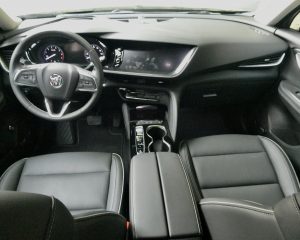
Upgraded Envision has leather seats and attractive instruments, attending to both driver and passenger requirements..
The 2.0-liter turbo four was quick and substantial in all acceleration challenges, and the 9-speed automatic was a welcome presence compared to a CVT, and shift paddles on the leather-covered steering wheel add to the sportiness and flair.
The EPA estimates for fuel economy showed 24 city and 31 highway, and we recorded an average of 31.5 in combined city-highway driving — very impressive compared to other middle-and smaller SUVs. The Envision should be ranked among SUVs, although it isn’t much of a stretch to consider it as a trendy station wagon with SUV tendencies.
Behind the fold-down second row of seats there is a surprisingly large storage area, and I must confess to a surprise that took me the full week to figure out. The first time I opened the hatch, I reached up for the remote switch to electrically close it, but nothing happened. I tried several times, and after finding no response, I pulled down on the hatch and it stubbornly closed, but not quite all the way. As I reached to force it to the final latching, it buzzed and latched itself.
I also asked Joan and Jack to try closing it but they found the same refusal of the push-button to activate it. On the final morning in my possession, I was looking over the array of many buttons and switches and spotted a small button on the door, down below the various window switches. Looking closer, I saw it was a rotating switch that showed full, 3/4, and off, and it was switched to “off.” Sure enough, when I rotated it and pushed it, the hatch opened up, smoothly and efficiently. And also closed at a second push.
If some of the switchwork evaded my familiarity, I might be able to explain by the fact the Envision’s final assembly point is Yantai, China. The country of origin of the engine is China, and the country of origin of the transmission is — you guessed it — China. A lot of people are aware of the advances being made in design and quality by China’s auto-makers as that country surges toward incredible numbers of vehicles and drivers, and they wonder when a truly solid and competent Chinese vehicle will make inroads into the U.S. market.
They can wonder no longer. The Envision is here to tell us all, China is here and has produced a solid, competent vehicle that you might mistake for any of a dozen competitive SUVs. The surprise is that General Motors has been the anchor for U.S. vehicles for so many decades that we are startled to change the old slogan “Buy American” to “Buy Chinese With an American name.”
The price of the new Envision ST is $35,800 as a base, and once you load it up with the Technology Package and the ST package it rises to $41,315. Those additions include a forward park assist, to augment the standard rear park assist, which is the auto-park system that you can see if you watch multiple TV ads for the Envision, parking itself in a tight space, on any Twins broadcast, or elsewhere.
The lane-keep assist, lane-departure warning, cross-traffic alert and blind-spot monitoring are all included standard as well, and all the connectivity devices are in place, too. It is hard to envision, so to speak, all the standard stuff on a competitor for $35,000, or all the included equipment on the ST for $41,000.
One thing that is missing on the test vehicle is that its proper title adds the suffix “FWD” and not “AWD.” The tester was pulled along by front-wheel drive and did not have the all-wheel drive that I know is available. I have written often that if you’re going to get an SUV of any size and you live in the snow-belt area such as Minnesota, you would be foolish to not get AWD.
Naturally, driving the new Envision in Northern Minnesota in this 90s-featured summertime makes AWD unnecessary, ecen to think about, but we also know that winter is coming.
The hot summer makes air-conditioning more important, and it worked fine, even if it did take a half-mile to start throwing out chilly air. You fiddle with the switches and lower the temperature while raising the fan speed, and all of a sudden you are getting icy-cold air blowing too hard. Best to get used to setting it more moderately and driving the first half-mile to get the right blend.
We know that China has been fighting severe air-pollution for years, and we are getting it in Northern Minnesota this year from the numerous wildfires in Canada and in the Boundary Waters, sharing their windblown smoke to choke us up closer to Lake Superior and on into Wisconsin and the Upper Peninsula of Michigan. The Envision has a climate control switch that lets you activate an air-quality indicator, and an air ionizer. When the smoke was at its worst, we flipped on the ionizer and the air-conditioner turned recirculation, and we were breathing cleaner air than anybody on the outside.
Meanwhile, the paddles help in hill-descent, and the stop-start, which is switchable, did a nice job of climbing Duluth’s many steep avenues. When you stop for even a brief stop sign halt, the stop-start shuts down the engine but you are held in place. As you start up, it instantly re-engages and you’re off.
Maybe Buick is setting a good example for General Motors, beating the current chip shortage by expanding on the build capabilities in a country where those chips undoubtedly will come from. But all the right stuff is included on the Envision, which I must say is my favorite Buick model I have ever driven, or seen.
When you park in a shopping center lot, just be prepared for some long looks, and even for some folks to ask you what kind of car that is. Be nice, and don’t say “BMW.” It’s time to spread the word in Buick’s favor.


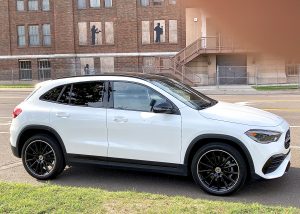
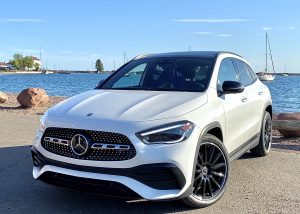
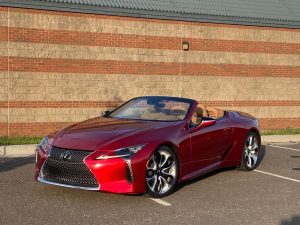
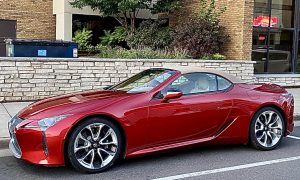
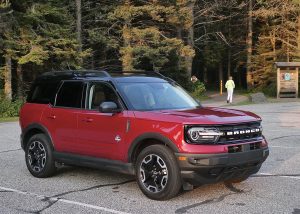
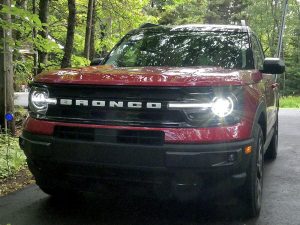
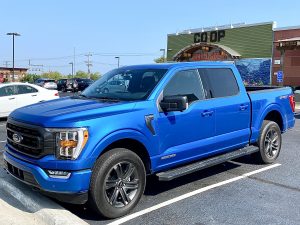
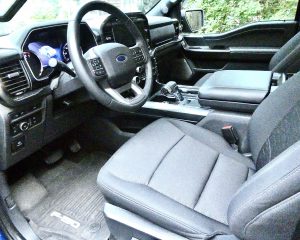
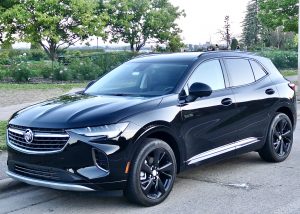
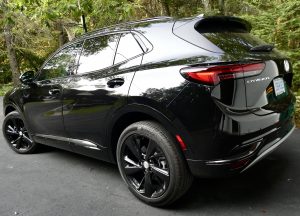
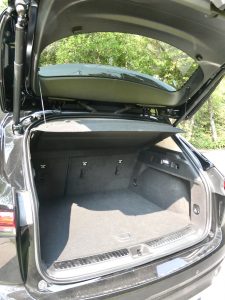

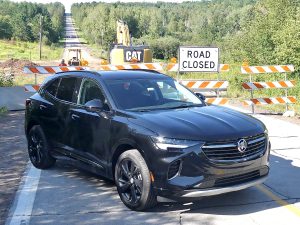
 John Gilbert is a lifetime Minnesotan and career journalist, specializing in cars and sports during and since spending 30 years at the Minneapolis Tribune, now the Star Tribune. More recently, he has continued translating the high-tech world of autos and sharing his passionate insights as a freelance writer/photographer/broadcaster. A member of the prestigious North American Car and Truck of the Year jury since 1993. John can be heard Monday-Friday from 9-11am on 610 KDAL(www.kdal610.com) on the "John Gilbert Show," and writes a column in the Duluth Reader.
John Gilbert is a lifetime Minnesotan and career journalist, specializing in cars and sports during and since spending 30 years at the Minneapolis Tribune, now the Star Tribune. More recently, he has continued translating the high-tech world of autos and sharing his passionate insights as a freelance writer/photographer/broadcaster. A member of the prestigious North American Car and Truck of the Year jury since 1993. John can be heard Monday-Friday from 9-11am on 610 KDAL(www.kdal610.com) on the "John Gilbert Show," and writes a column in the Duluth Reader.